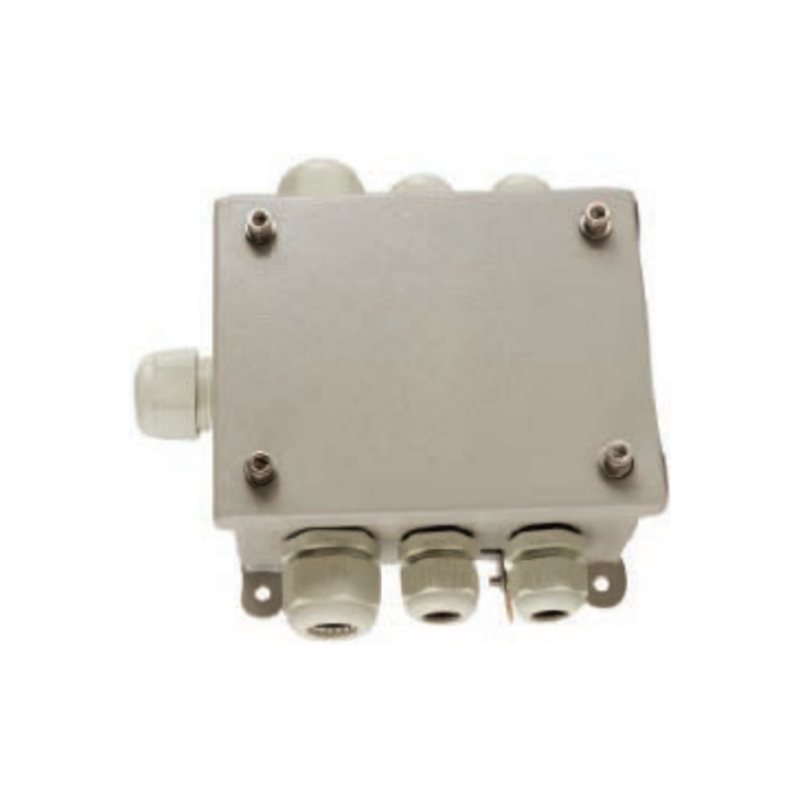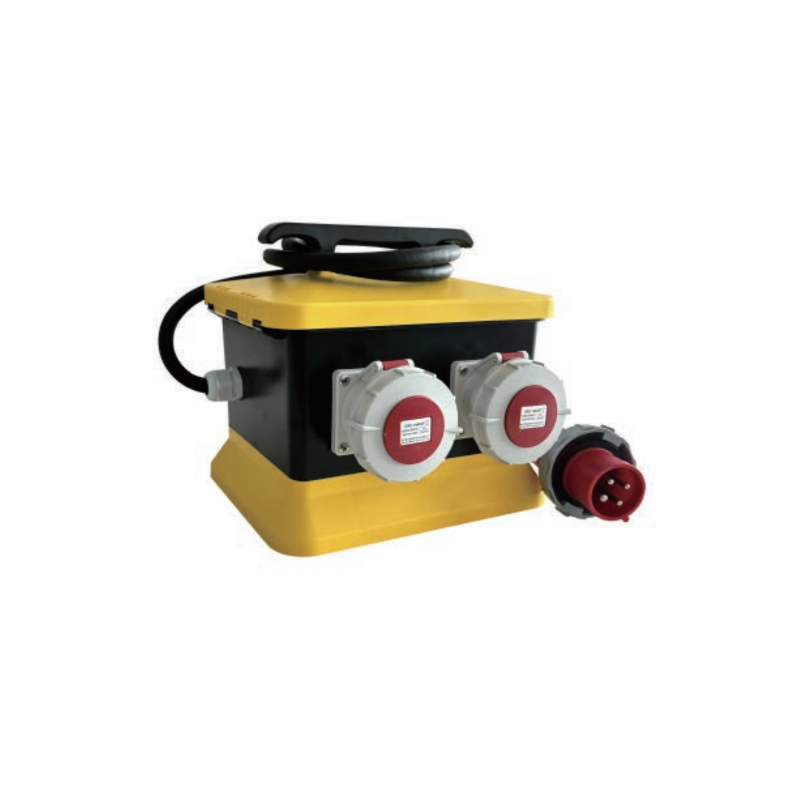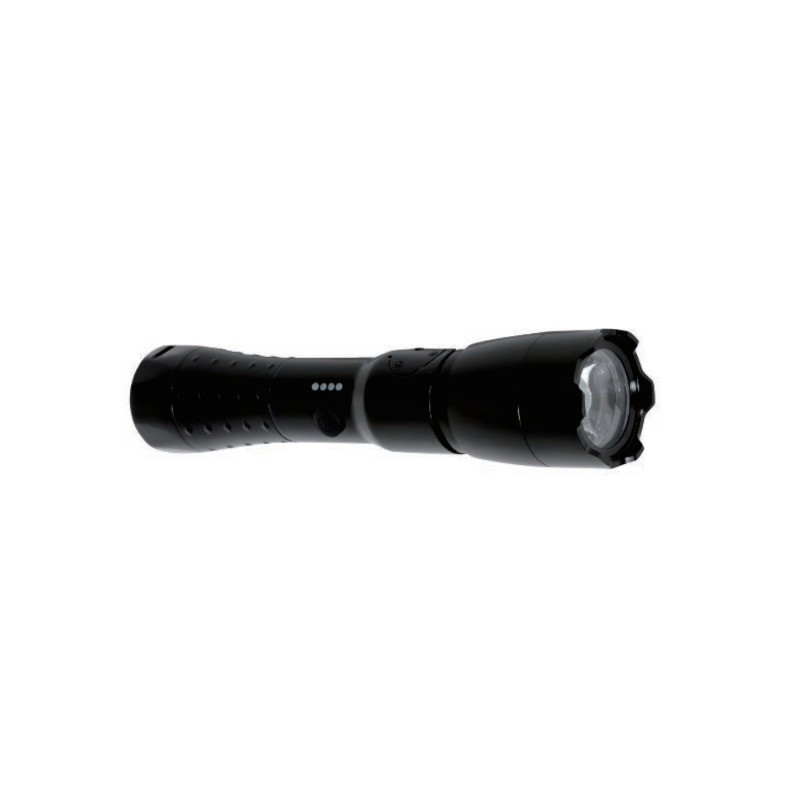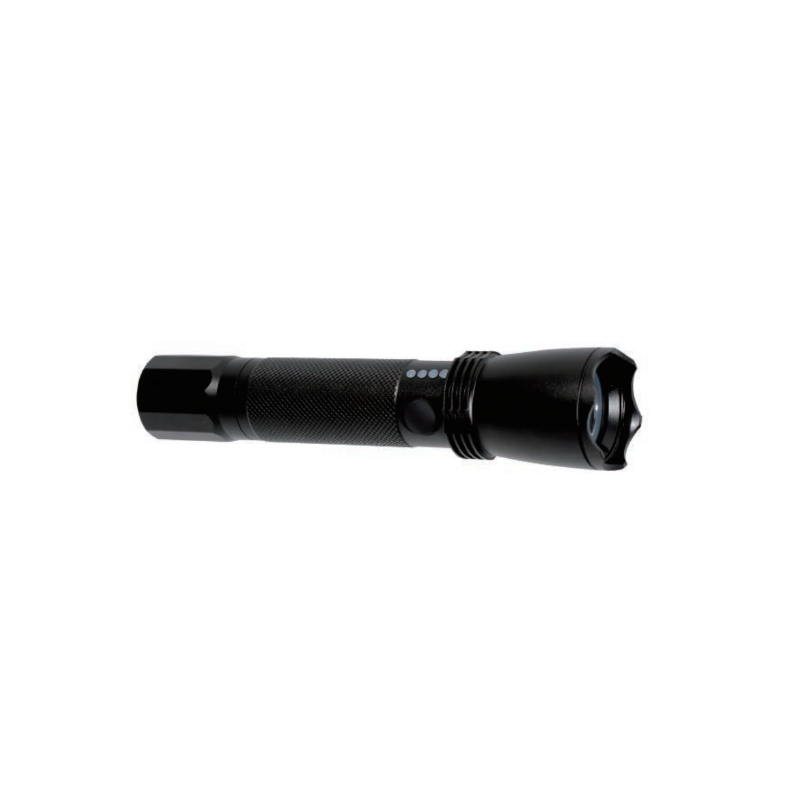Basic principles of marine incandescent lamps
Marine incandescent lamps illuminate by heating tungsten filaments with electric current to make them glow. The basic principle is similar to that of ordinary incandescent lamps, but the design and materials have been improved to adapt to the marine environment.
- Principle of light emission: Incandescent lamps use electrical energy to heat the filament (usually tungsten filament), and when the filament temperature reaches 2000 to 3000 degrees Celsius, the tungsten filament begins to emit visible light.
- Marine improvements: In order to meet the special requirements of ships in the marine environment, marine incandescent lamps usually use corrosion-resistant materials, have strong waterproof properties, and can work normally in high humidity and salt spray environments.
- Stability and reliability: Marine incandescent lamps need to maintain stable operation under vibration and shaking, so their structure is more solid, and the internal parts are reinforced to prevent damage due to ship shaking.
- Light efficiency requirements: During navigation, the brightness and stability of the light are crucial to navigation safety, so marine incandescent lamps usually have high brightness and good light color quality to ensure effective lighting at night and in bad weather conditions.
- Voltage adaptability: Marine incandescent lamps also need to adapt to the special requirements of the ship’s power system and are usually able to work normally under a wide range of voltages to avoid voltage fluctuations affecting the lighting effect.
How to choose suitable marine incandescent lamps
Choosing the right marine incandescent lamp can not only improve the lighting effect, but also ensure navigation safety. Here are several key factors to consider when choosing marine incandescent lamps:
Bulb power:
- Adaptability: Choose bulbs of appropriate power according to the lighting needs of different areas on the ship. For example, the wheelhouse requires higher brightness, while lower power bulbs can be selected in the rest area.
- Energy saving considerations: Choose bulbs with moderate power to balance lighting effects and energy consumption to avoid unnecessary waste of electricity.
Corrosion resistance:
- Material selection: High-quality marine incandescent lamps usually use corrosion-resistant materials such as stainless steel or galvanized metal to cope with high humidity and salt spray in the marine environment.
- Waterproof performance: Make sure the lamp has good waterproof performance to prevent water vapor from intruding and causing damage to the bulb.
Voltage adaptability:
- Voltage range: The voltage of the ship’s power system may be unstable. Choose a bulb that can work stably in a wide voltage range to ensure normal light emission under various voltage conditions.
- Voltage type: Confirm whether the bulb is suitable for direct current (DC) or alternating current (AC) power supply to match the ship’s power system.
Certification and standards:
- Compliance with standards: Select marine incandescent lamps that comply with the regulations of the International Maritime Organization (IMO) and the maritime safety regulations of various countries to ensure their reliability in safety and performance.
- Certification mark: Check whether the lamp has passed the test and certification of the relevant certification body and has the corresponding certification mark.
Luminous efficiency and life:
- High-efficiency light source: Select bulbs with high luminous efficiency and long life to reduce replacement frequency and maintenance costs and improve use efficiency.
- Color rendering: Consider the color rendering index (CRI) of the bulb and select bulbs with good color rendering to ensure the naturalness and comfort of the light.
Actual application environment:
- Special needs: According to the specific use environment and special needs of the ship, such as explosion-proof and shock-proof, select incandescent lamps with corresponding characteristics.
- Installation location: Consider the installation location and method of the lamp, and select the appropriate lamp type and installation method to ensure uniform light distribution and convenient maintenance.
International marine lighting safety standards
International standards for marine lighting safety are designed to ensure the safety of ships at sea and ensure that ships can clearly identify each other’s position and navigation intentions. These standards involve specific requirements such as the lights, colors, brightness and visible angles of lights that different types of ships should use under different navigation conditions.
- International Regulations for Preventing Collisions at Sea (COLREGs)
- Types and uses of navigation lights: clarify the navigation lights that various types of ships should use under different navigation conditions, such as bow lights, stern lights, side lights and anchor lights.
- Light color and visible angle: stipulates the color of the lights, such as the starboard side light should be green, the port side light should be red, and the stern light should be white, and specifies the visible angle and position of these lights.
- International Electrotechnical Commission (IEC) standards
- IEC 60945: involves general requirements for ship and maritime communication and navigation equipment, including environmental test requirements for lighting equipment in various marine environments.
- IEC 60092-306: covers the installation and testing requirements of ship electrical installations to ensure the safe and effective operation of lighting systems.
- International Maritime Organization (IMO) Regulations
- SOLAS Convention: The International Convention for the Safety of Life at Sea provides detailed provisions for safety equipment and operating requirements for ships, including the reliability of lighting equipment in emergency situations.
- MSC.253(83): This regulation describes the technical requirements for emergency lighting systems on ships to ensure that crew and passengers can evacuate safely in the event of a power failure.
International Maritime Organization (IMO) Regulations
The International Maritime Organization (IMO) is a specialized agency of the United Nations responsible for international maritime affairs. Its regulations are aimed at improving maritime safety and protecting the marine environment. The following are some key IMO regulations:
- SOLAS Convention (International Convention for the Safety of Life at Sea)
- Life-saving appliances and lighting: Requires ships to be equipped with adequate life-saving appliances and emergency lighting systems to ensure the safety of crew and passengers in emergency situations.
- Fire protection and fire fighting equipment: Requires ships to be equipped with effective fire protection and fire fighting lighting equipment to ensure that sufficient lighting can be provided for evacuation in the event of a fire.
- MARPOL Convention (International Convention for the Prevention of Pollution from Ships)
- Pollution prevention lighting equipment: stipulates various lighting equipment to prevent pollution from ships, such as oil detection lights and exhaust gas detection lights, to ensure effective detection and treatment of pollutants at night.
- STCW Convention (International Convention on Standards of Training, Certification and Watchkeeping for Seafarers)
- Crew training and lighting equipment operation: stipulates the training content that crew members should receive, including how to properly operate and maintain lighting equipment on board to ensure its effectiveness and safety.
Maritime safety regulations of various countries
Countries have formulated specific maritime safety regulations based on international standards to ensure that ships sailing within their territories meet international and national safety requirements.
- United States Coast Guard (USCG)
- Marine lighting equipment standards: USCG has made detailed provisions for the performance, testing and installation of marine lighting equipment to ensure its reliability in various sea conditions.
- Certification requirements: Marine lighting equipment must pass the USCG certification test and meet relevant safety and performance standards before it can be used in US waters.
- European Union (EU) Standards
- CE Certification: The EU requires that marine lighting equipment must obtain CE certification to ensure that it meets the EU’s safety, health and environmental requirements.
- EMC Directive: The EU also requires marine lighting equipment to comply with the Electromagnetic Compatibility (EMC) Directive to prevent electromagnetic interference between devices.
- China Maritime Safety Administration
- CCS Certification: The China Maritime Safety Administration stipulates that marine lighting equipment must be certified by the China Classification Society (CCS) to ensure that it meets national and international safety standards.
- Maintenance and inspection of lighting equipment: The China Maritime Safety Administration also stipulates the daily maintenance and regular inspection requirements of ship lighting equipment to ensure its long-term effective operation.
Testing and certification of marine incandescent lamps
Marine incandescent lamps must undergo rigorous testing and certification before being put into use to ensure their safety and reliability in various marine environments. The following is the testing and certification process for marine incandescent lamps, the safety testing process involved, and the main certification agencies and marks.
Safety testing process
Environmental testing:
- Salt spray resistance test: simulates salt spray corrosion in the marine environment to ensure the corrosion resistance of the lamp in a high salt spray environment.
- Humidity test: simulates a high humidity environment to test the waterproof performance and electrical insulation performance of the lamp.
- Temperature cycle test: cycles between extreme high and low temperatures to test the stability and reliability of the lamp at different temperatures.
Mechanical testing:
- Vibration test: simulates vibration and impact during ship navigation to ensure the mechanical stability of the lamp in a vibrating environment.
- Impact test: simulates accidental collisions to test the impact resistance of the lamp.
Electrical testing:
- Voltage fluctuation test: tests the working performance of the lamp in different voltage ranges to ensure that it can still work normally when the voltage of the ship’s power system fluctuates.
- Insulation resistance test: tests the electrical insulation performance of the lamp to ensure that leakage and short circuit are prevented.
- Electromagnetic compatibility (EMC) testing: Ensure that the lamps do not interfere with the normal operation of other electronic equipment and are not affected by external electromagnetic interference.
Optical testing:
- Luminous efficiency testing: Measure the luminous flux and luminous efficiency of the lamps to ensure that they provide sufficient brightness.
- Color rendering index (CRI) testing: Test the color rendering performance of the lamps to ensure the naturalness and comfort of the light.
Certification bodies and marks
International certification bodies:
- International Electrotechnical Commission (IEC): IEC has established standards for many marine electrical equipment, and marine incandescent lamps need to comply with relevant IEC standards to obtain certification.
- International Association of Classification Societies (IACS): IACS members such as Lloyd’s Register (LR), American Bureau of Shipping (ABS) and China Classification Society (CCS) provide certification services for marine equipment.
Regional and national certification bodies:
- EU CE certification: Ensure that marine incandescent lamps meet the safety, health and environmental protection requirements of the EU.
- US Coast Guard (USCG) certification: Ensure that the lamps meet the US maritime safety standards.
- China Classification Society (CCS) certification: Ensure that the lamps meet China’s maritime safety standards.
Common certification marks:
- CE mark: indicates that the product complies with the requirements of relevant EU directives.
- UL mark: issued by Underwriters Laboratories, indicating that the product has passed strict safety tests.
- CSA mark: issued by the Canadian Standards Association, indicating that the product complies with the safety standards of the North American market.
- IECEx mark: indicates that the product complies with the International Electrotechnical Commission’s explosion-proof electrical equipment standards.
Practical application case analysis
Practical application cases of marine incandescent lamps on various ships demonstrate their performance and reliability in different environments. Here are a few typical application case analyses:
- Commercial cargo ships
On commercial cargo ships, marine incandescent lamps are often used for deck lighting, bridge lighting, and internal passage lighting. Since cargo ships are at sea for long periods of time, lamps need to have high durability and corrosion resistance. For example, on a large cargo ship, crew members reported that after using incandescent lamps certified to the IEC 60945 standard, the lamps can still maintain stable light efficiency in high humidity and salt spray environments, reducing the need for frequent bulb replacement and improving operational efficiency. - Cruise ships
Cruise ships require not only practical lighting, but also aesthetics and comfort. A well-known cruise company selected marine incandescent lamps with a high color rendering index (CRI) for cabin and public area lighting, which improved the lighting effect and made passengers feel more comfortable. In addition, the waterproof design of the lamp ensures its safe use in high humidity areas such as swimming pools and decks. - Fishing boats
Fishing boats often work in harsh marine environments and require high-intensity and high-brightness lighting to ensure the safety of nighttime operations. On a large fishing boat, specially designed high-power marine incandescent lamps are used. These lamps have been tested for vibration and impact to ensure that they can still work normally under severe shaking, helping the crew to fish efficiently at night.
Safety accidents and preventive measures
Safety accident cases
- Lamp leakage accident: When a fishing boat used uncertified marine incandescent lamps, the internal circuit was damp and short-circuited due to the poor waterproof performance of the lamps, causing leakage accidents and injuring the crew.
- Lamp explosion accident: A low-quality incandescent lamp used on a cargo ship exploded in a high-temperature environment, and the fragments splashed, causing injuries to the crew and a small-scale fire.
Preventive measures
- Choose certified lamps: Make sure to use marine incandescent lamps that meet international and national standards, and choose products that have passed IEC, CE, UL and other certifications to ensure their safety and reliability in various environments.
- Regular inspection and maintenance: Regularly check the electrical connection, waterproof seal and other key components of the lamps, replace damaged or aged lamps in time, and prevent safety accidents caused by lamp failures.
- Train crew members: Train crew members on the use and maintenance of lamps to ensure that they understand how to properly operate and maintain lighting equipment and how to deal with lamp failures in emergencies.
Impact of standard updates on marine lighting
Standard updates
With the development of science and technology and the improvement of safety requirements, marine lighting standards are also constantly updated. For example, the International Maritime Organization (IMO) and the International Electrotechnical Commission (IEC) regularly update relevant standards to reflect the latest technological advances and safety requirements.
Impact
- Improve safety and reliability: New standards usually contain more stringent test requirements and performance standards to ensure the safety and reliability of marine incandescent lamps in various extreme environments. For example, the new standards may require lamps to have higher waterproof and anti-corrosion properties to enhance their durability in the marine environment.
- Promote technological innovation: The introduction of new standards has promoted technological innovation and improvement by manufacturers of marine lighting equipment. For example, developing more efficient bulbs and circuit designs to meet new energy efficiency standards and environmental protection requirements.
- Improve market competitiveness: Manufacturers need to improve the market competitiveness of their products through certification that meets the new standards. When choosing lamps, ship operators prefer to choose products that meet the latest standards to ensure that their ships meet international and national safety requirements.
- Increase initial costs: Although the new standards improve the performance and safety of lamps, they may also increase initial procurement costs. However, in the long run, the overall operating costs may be reduced due to the durability and low maintenance requirements of high-quality lamps.
By understanding actual application cases, safety accidents and preventive measures, and the impact of standard updates on marine lighting, we can have a more comprehensive understanding of the importance of marine incandescent lamps and their key role in ensuring the safety and efficient operation of ships.







